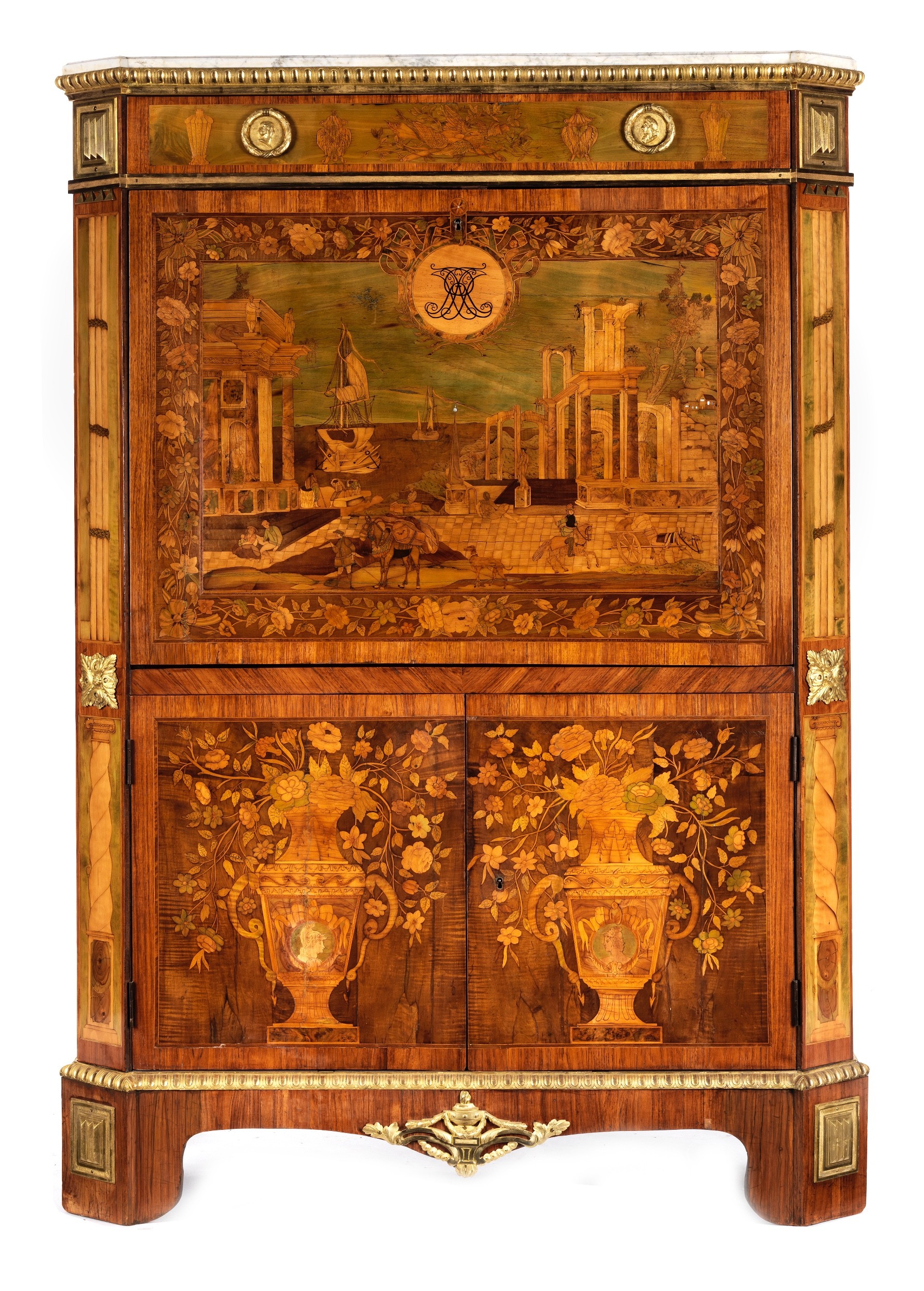
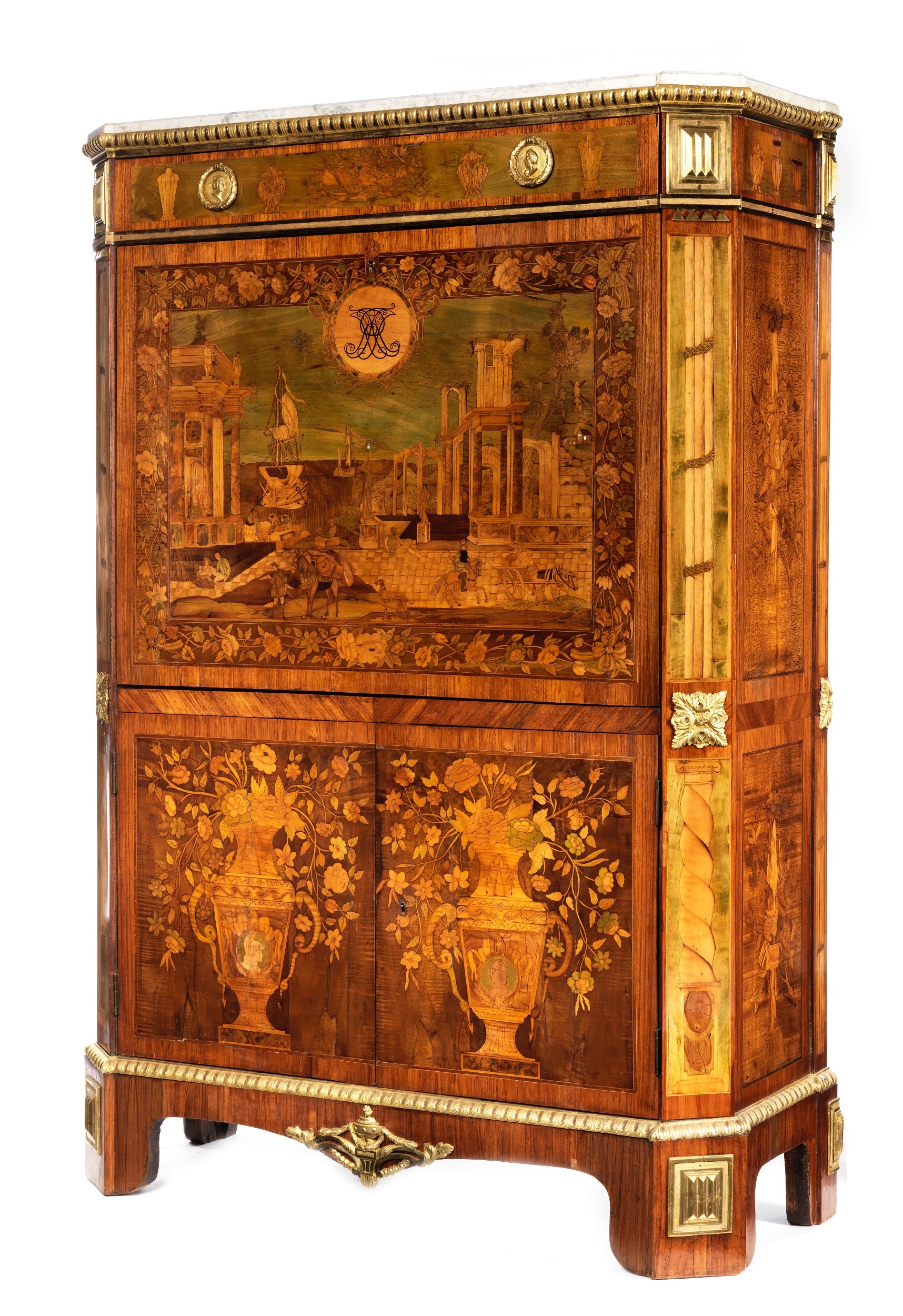
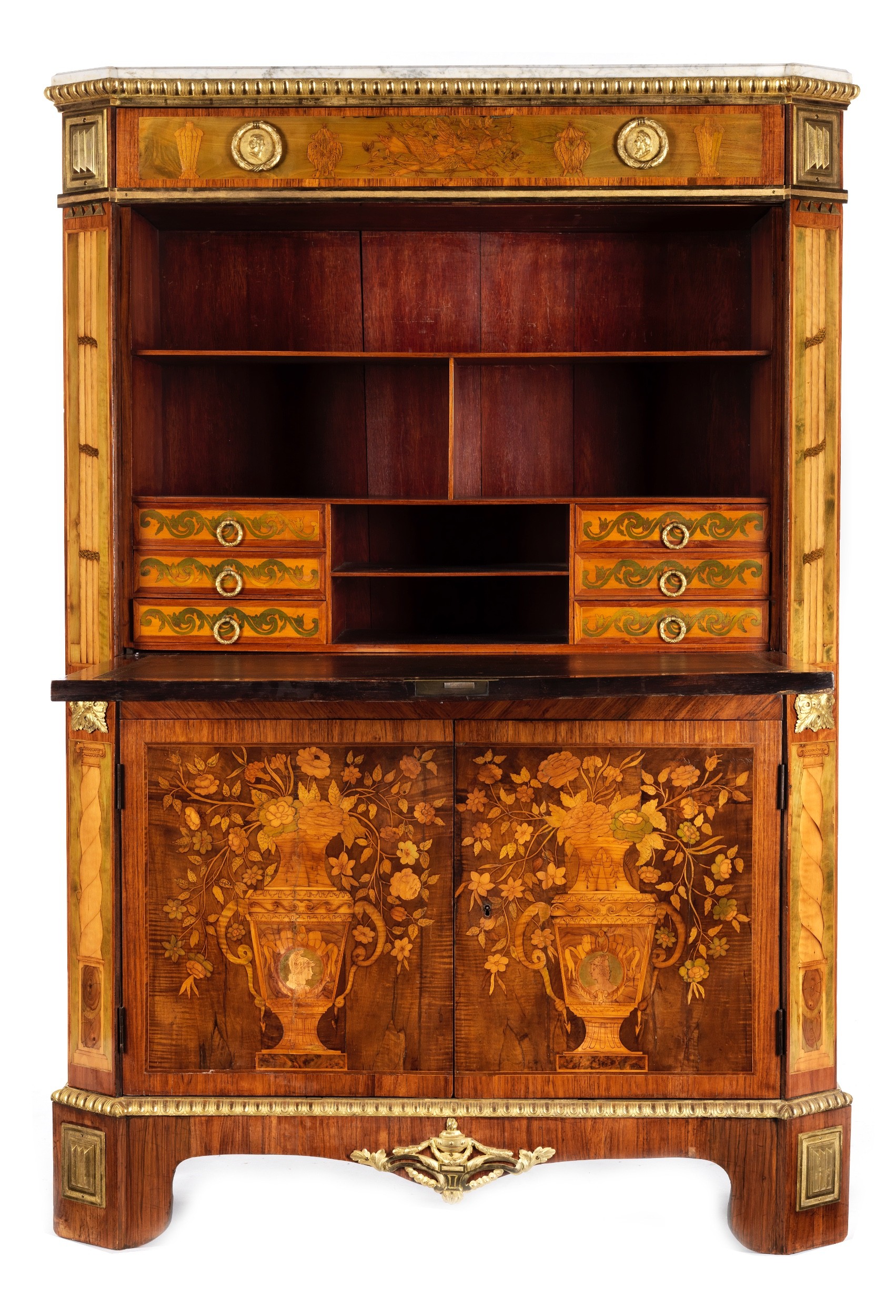
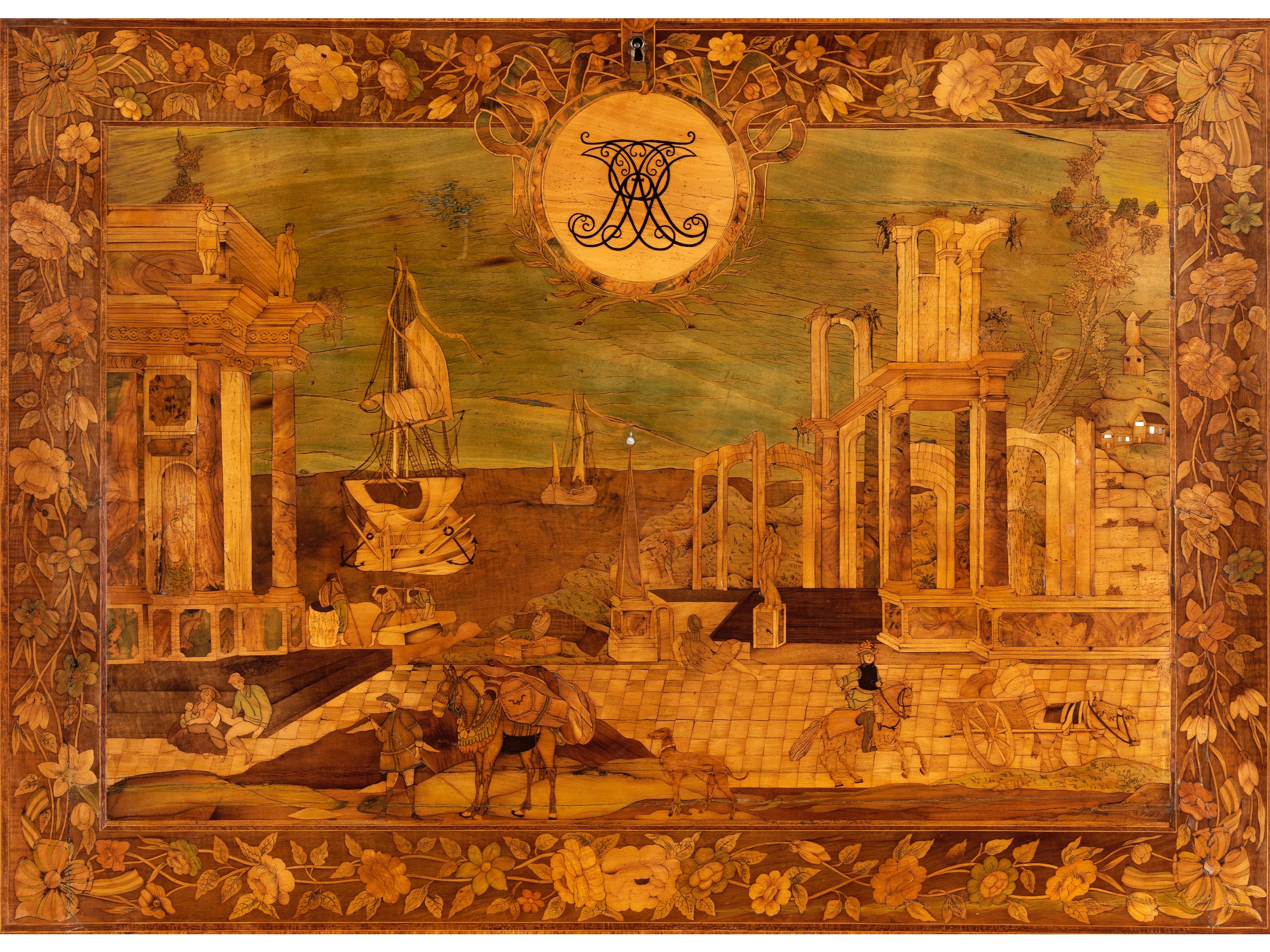
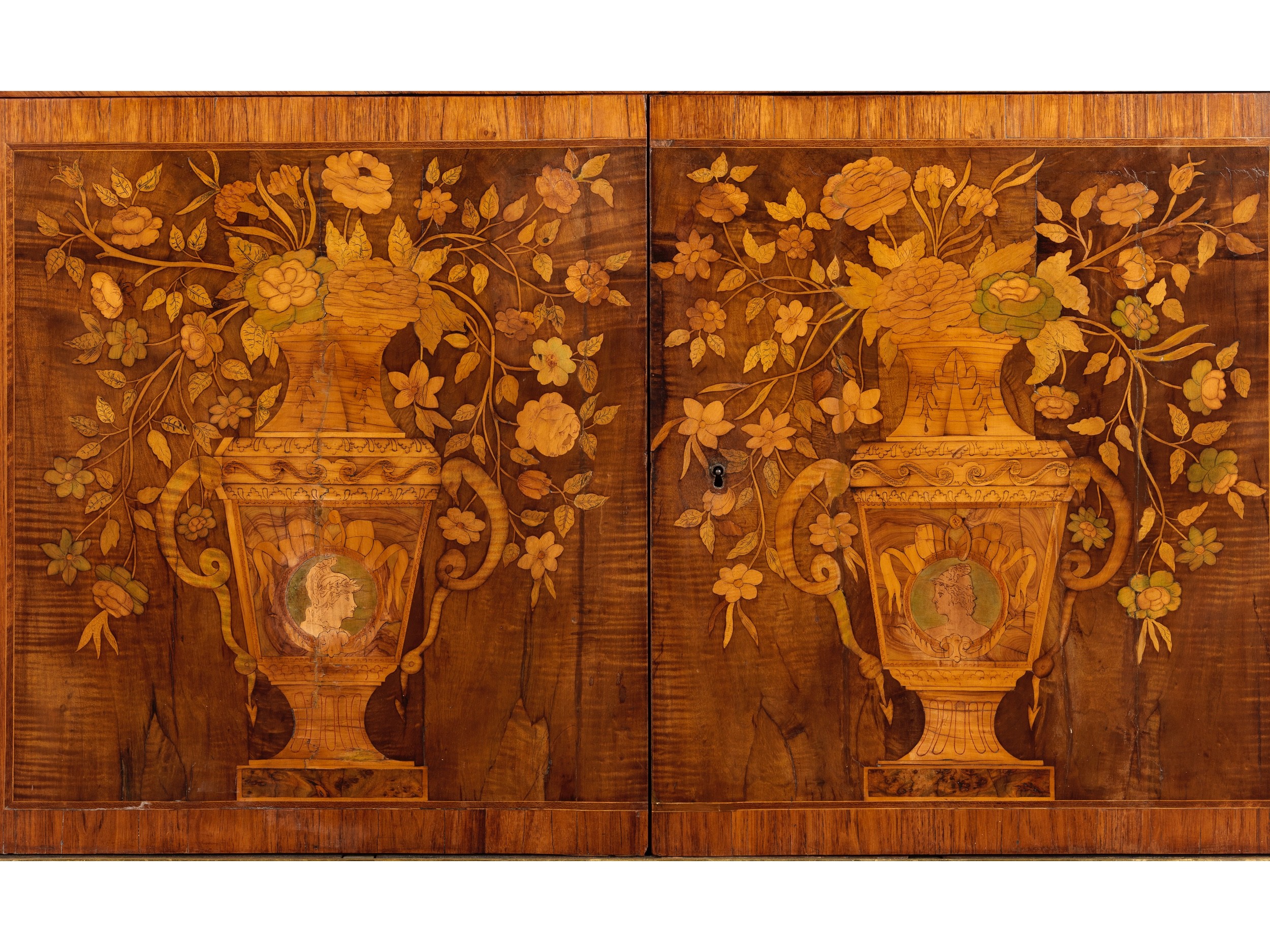
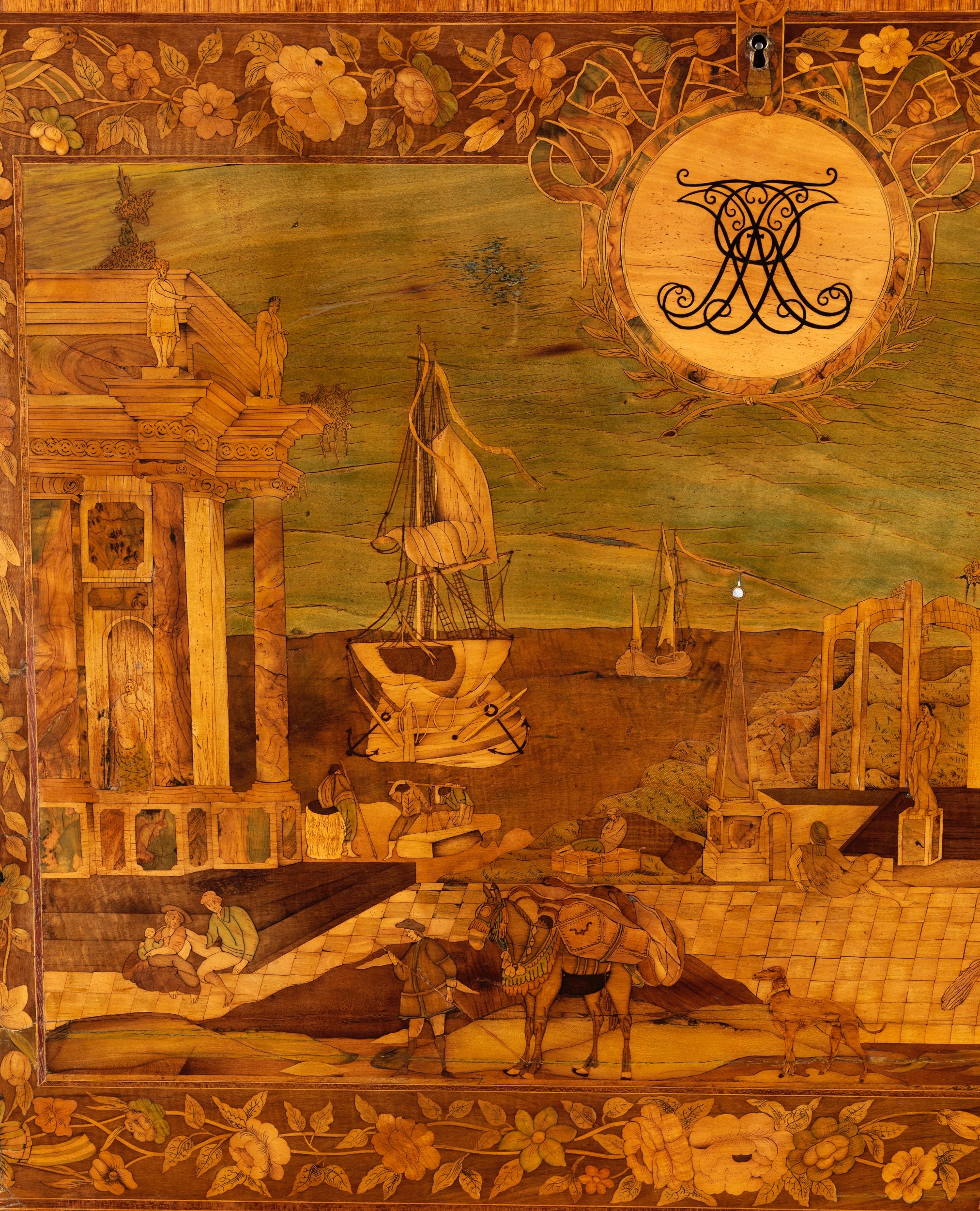
1780






Provenance:
Madame de Polles, sold Ader, Galerie Jean Charpentier, Paris 17-18 November 1936 Lot 209
Anonymous Sale, Poulain Le Fur 24 May 1996 Lot 221
Private Collection Germany.
Pictorial Marquetry
The striking marquetry combines Italianate classical ruins with figures engaged in leisurely pursuits, which were extremely fashionable in the 18th Century. They were admired for their painterly effect and evoked memories of sights seen and sensations experienced while on the Grand Tour. Such distinctively pictorial marquetry panels were often based on engraved sources, for instance, a series of eight engravings by P.F. Basan, one of which was entitled Vi Ruine
Featured similar arcaded ruins to this panel and derived from a painting by P.A.Machy ( 1723 – 1807), who was acknowledged as an expert painter of architecture and ruins: in L’Avant-Coureur, 23rd January 1764 he was described as L’unique enc e genre ( G. de Bellaigue, “Ruins in Marquetry”, Apollo January 1968,p.20).
The marquetry hunting trophies to each side of this beautifully -inlaid secretaire a abattant are derived from a design by the engraver and decorator Jean-Charles Delafosse (1734-1789/91) from his Livres de Trophees de chasse et de peche, reissued by P.F.Tardieu between 1776 and 1785. The same hunting trophies, including the same modification of suspending ribbon bows to the original design, can be found on an unstamped Louis table Circa 1777, in the James de Rothschild collection at Waddesdon Manor, Buckinghamshire, as well as on a drop-front secretaire by Pierre Roussel (maitre in 1745) in the Metropolitan Museum, New York. Similar bows feature on a mechanical table stamped by Christophe Wolff (maitre in 1755) in the Louvre and it has been argued that the “Master of the Striped Bow” should be identified as Wolff (G. de Bellaigue, The James de Rothschild Collection at Waddesdon Manor, London, 1974, Vol II, pp.498-502, no. 102). The bows on the mechanical table in the Louvre are tied in the corners of the foliate border which is nearly identical to that framing the front central panel of this secretaire.
Christopher Wolff and Roussel, Dufour, Macret, Nicolas.
It has been convincingly suggested that specialist marqueteurs, such as Christophe Wolff and Anre-Louis Gilbert (1746-1809), supplied marquetry panels to other ebenistes to construct their own furniture around; and it is likely that large ateliers, such as Pierre Roussel’s could have employed their own in-house marqueteurs at a time when such panels were particularly fashionable (G.de Bellaigue, “Engravings and the French Eighteenth-Century Marqueteur”, Burlington Magazine, May 1965, pp 240-250 and July 1965, pp 356-363).
A closely related secretaire a abattant stamped by Pierre Roussel was sold by Christie's in London 10th December 1992 Lot 211. The pictorial marquetry panels to both its upper fall-front and lower doors are directly inspired by the engraver Vi Ruine and the same scene to the fall-front appears on the mechanical table in the Louvre. The Roussel secretaire features a depiction of a donkey laden with its owner’s belongings identical to that on this secretaire. Further similarities can be found not only in the marquetry panels but also in the inlaid angles, which depict caryatids to the Roussel example and cluster and Solomonic columns to this secretaire as well as the overall form and mounts, notably the prismatic angle mounts and ribbon-tied laurel ring handles.
A further secretaire stamped by Charles-Joseph Dufour also featured the “Wolff” striped bow and hunting trophies after Delafosse to the sides of this secretaire, as well as similar somewhat Naïve arrangement to the interior (sold Sotheby’s Paris 18 December 2001 Lot 302)
A further example stamped by Antoine Nicolas (maitre in 1765) featured similar Oriental vases and vessels to its frieze drawer as well as the donkey to one corner of the main panel and ribbon-tied trophies emblematic of the arts, music and science to the sides (Christie's 15th June 1995, Lot 112)
Another similar secretaire a abattant stamped by Pierre Macret, formerly in the collection of Sir Michael Sobell (Christies London 23rd June 1994 Lot 148) features similarities in the brickwork, foliage and ruins as well as the distinctive prismatic mounts.
| Dimensions | CM | Inches |
|---|---|---|
| Width: | 100 | 39.5 |
| Depth: | 38 | 15 |
| Height: | 143.5 | 56.5 |